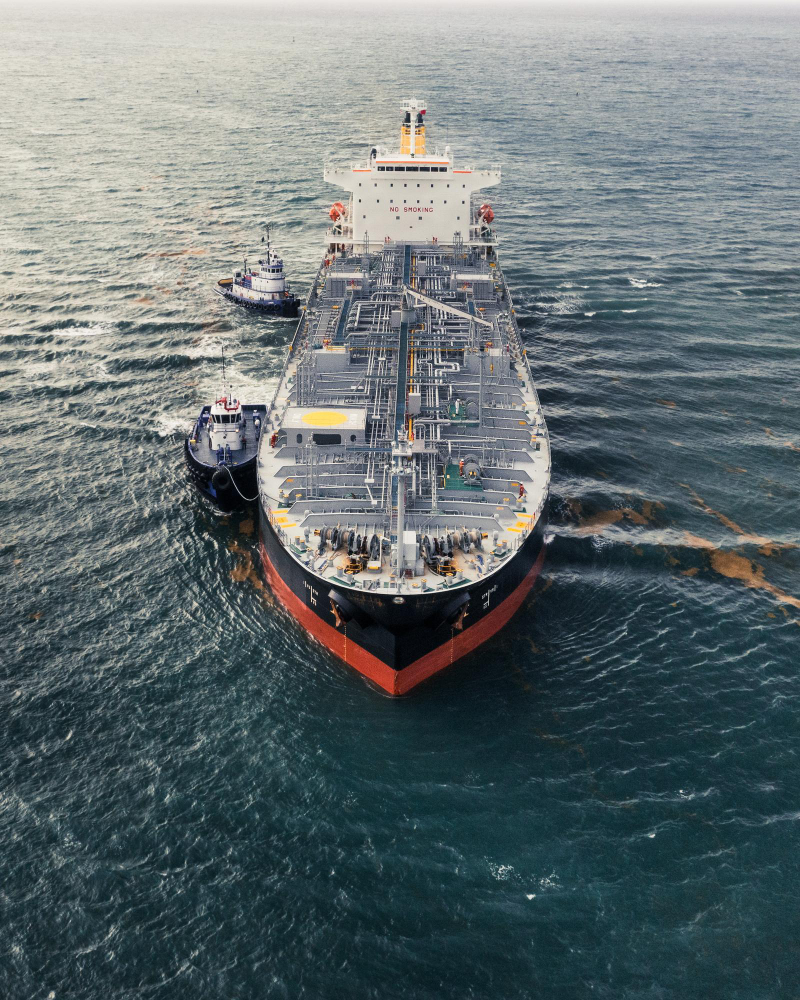Optimizing Fleet Performance Through Advanced Marine Engine Monitoring
The maritime industry operates under intense pressure to minimize operational costs, maximize vessel uptime, and adhere to increasingly strict environmental regulations. For any vessel operator, the engine is the heart of the operation, and its reliability directly dictates profitability. Traditional engine health checks are often reactive or based on infrequent manual inspections, leading to significant blind spots in performance monitoring. This case study details how a mid-sized commercial shipping company, operating a fleet of offshore support vessels, successfully deployed the Precisol Automation CAN Telematics Logger to transform its engine monitoring strategy from reactive maintenance to data-driven predictive optimization, drastically improving fleet efficiency and reliability. The solution focused on acquiring, storing, and analyzing high-fidelity engine performance data directly from the vessel’s Controller Area Network (CAN) bus.
Problem Statemen: Our client faced a trifecta of common operational challenges across its fleet
Unexpected Engine Failures and Downtime: Despite regular scheduled maintenance, the vessels experienced unpredictable engine component failures, often necessitating emergency repairs. These unexpected breakdowns led to costly unplanned downtime, missed contract deadlines, and substantial expenses for emergency spare parts and service teams dispatched to remote locations. The lack of continuous, real-time performance data meant that early warning signs—such as minor variations in oil pressure or coolant temperature—were completely missed until a critical failure occurred.

- Inefficient Fuel Usage: Fuel consumption accounts for a massive portion of a vessel’s operating expense. The fleet operator relied primarily on generalized voyage reports and fuel bunker receipts, lacking the granular, engine-specific data required to identify operational inefficiencies. Without knowing the exact Fuel Rate (L/hr) correlated with specific RPMs, loads, and sea conditions, captains and fleet managers could not optimize sailing profiles or detect engine performance degradation that subtly increased fuel burn over time.
- Lack of Historical Performance Data: Maintenance records were fragmented, and historical engine performance data was virtually non-existent. When a technical issue arose, engineers had to rely on current symptoms and general experience, hindering effective root cause analysis. This absence of a comprehensive performance baseline prevented the establishment of accurate predictive maintenance models and made it impossible to conclusively determine the effectiveness of repair work or system upgrades.
Solution Overview
To address these challenges, our client adopted the Precisol Automation CAN Telematics Logger as a robust, protocol-independent solution for marine engine data acquisition.
The logger’s primary function is to connect directly to the vessel's engine network and non-intrusively record vital operational parameters. Modern marine diesel engines use a CAN bus network for communication, typically following the J1939 or the specialized marine NMEA 2000 protocol. The logger is protocol-agnostic but configured to interpret these specific standards.
Once connected and configured with the engine’s Database CAN (DBC) file—a proprietary map that defines how raw CAN messages correspond to physical engineering units—the logger continuously captures and decodes essential data points, including: Engine RPM and Load, Coolant Temperature, Oil Pressure and Temperature, Fuel Rate (Instantaneous Consumption), Turbocharger Boost Pressure, and Engine Hours and Diagnostic Trouble Codes (DTCs).
By acquiring and timestamping this high-resolution data locally, the logger provided the fleet managers with an unparalleled, detailed history of engine performance, moving beyond simple gauges and alarms.
System Architecture
The data acquisition and storage process is streamlined into a reliable, four-part system architecture designed for the harsh marine environment:
- Engine ECU (Electronic Control Unit):This is the source of all data. The ECU manages the engine’s operation and broadcasts all internal sensor readings and command statuses as messages onto the vessel's CAN network.
- CAN Network (J1939/NMEA 2000):This high-speed serial network acts as the data backbone, transmitting the raw, coded digital messages from the ECU to various connected devices.
- CAN Telematics Logger:The logger is passively connected to the CAN High and CAN Low lines. It listens to the network traffic and captures the raw CAN frames. Using the pre-uploaded DBC file, it decodes the raw hexadecimal frames into human-readable, calibrated values (e.g., converting '0x4A' in a specific ID to '85°C Coolant Temperature'). The logger also timestamps the data using its Real-Time Clock (RTC) for accurate chronological analysis.
- Local Data Storage (SD Card or Internal Memory):The decoded, high-fidelity data, often including GNSS coordinates (if the optional antenna is used), is securely stored on the logger’s non-volatile internal storage (up to 32GB microSD card). This offline storage approach is critical for marine operations where continuous, reliable satellite connectivity is cost-prohibitive or unavailable.

Implementation
The successful deployment of the CAN Telematics Logger required a meticulous three-step process tailored to the existing vessel architecture of the shipping company's fleet.
- Logger Installation:Installation was simple and non-intrusive. The logger's robust, IP40-rated enclosure allowed it to be mounted securely within the engine room console. The electrical connection required only four wires via a standard DB-9 connector: power (12V), ground, CAN High (CAN H), and CAN Low (CAN L). Since marine engines often utilize a J1939 port or an NMEA 2000 backbone, the installation was a quick procedure, taking only a few minutes per vessel. The device’s reliance on the vehicle's battery power and minimal current draw ensured continuous logging without additional power infrastructure.
- Configuration Process:The configuration was managed using the PreciCon proprietary Windows tool. Before deployment, the technical team uploaded the specific engine model’s DBC file to the logger via the USB 2.0 interface. Within the PreciCon software, they selected the critical parameters required for monitoring (such as oil pressure, fuel flow, and DTCs). This process ensures only relevant data is logged, optimizing storage and simplifying post-analysis. Critically, the logger’s protocol-independent design meant it could be configured for the J1939 protocol used by the main propulsion engines and adapted for the NMEA 2000 standard used by auxiliary equipment, offering fleet-wide standardization.
- Data Retrieval and Analysis:Since the logger does not feature wireless connectivity—a conscious decision to lower operational costs—data retrieval is an offline process. Vessel engineers retrieve the data during port calls by connecting a laptop to the logger's USB port. The PreciCon tool facilitates a secure download of the log files in industry-standard formats like .CSV and .MF4. This process is rapid and ensures data integrity. The fleet's analysts then process the large volume of time-stamped data to calculate key performance indicators (KPIs), identify operational trends, and pinpoint performance anomalies indicative of impending failure.
Results and Benefits
The implementation of the CAN Telematics Logger delivered substantial and measurable improvements to the client's fleet operations:
- Engine Reliability Improved by 35%: By shifting to data-driven predictive maintenance based on continuous monitoring of engine parameters (e.g., oil pressure and temperature trends), the client reduced unplanned engine-related downtime by 35% within the first year. This proactive strategy allowed them to avert expensive mid-voyage breakdowns by scheduling targeted repairs during planned port calls.
- Fuel Efficiency Gained 7.2%: Granular logging of the Fuel Rate (L/hr) correlated with RPM and load allowed analysts to identify optimal operating profiles. This optimization led to an average fuel consumption reduction of 7.2% per voyage, significantly lowering operational costs.
- Diagnostic Time Cut by 60%: The logger served as an accurate flight recorder, providing complete historical data and captured CAN Error Logs. This high-fidelity information accelerated root cause analysis and troubleshooting, reducing the time required to diagnose engine issues by 60%.
This case study demonstrates the critical role that specialized data acquisition tools, like the Precisol Automation CAN Telematics Logger, play in modern marine vessel operations. By providing a reliable, cost-effective, and robust means to capture high-resolution engine data directly from the CAN bus—regardless of protocol (J1939 or NMEA 2000)—vessel operators can gain unprecedented operational intelligence. The transition to an offline, data-centric monitoring approach has proven to be a highly effective strategy for achieving tangible reductions in unplanned downtime and operational expenditure, setting a new standard for engine health management in the commercial maritime sector.


